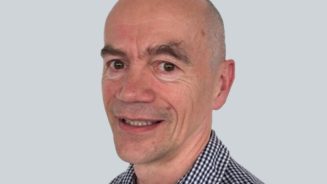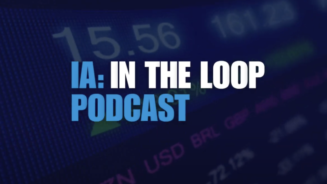In the first episode of TV phenomenon Breaking Bad, lead character Walter White tells his classroom, “Chemistry is, well technically, chemistry is the study of matter. But I prefer to see it as the study of change.”
For fund manager Ian Heslop, his personal study of change took him from an Oxford undergraduate degree in chemistry to a Ph.D in Edinburgh studying medicinal chemistry to running a total $3.5bn for Old Mutual Global Investors.
Heslop was attracted to the analytical and systematic nature of fund management, which shares qualities with the science of chemistry, yet brought a fresh challenge.
In 1997 he joined the UK active equity desk at Barclays Global Investors, where he spent the next three years. The amalgamation of BGI subdivision Gerrard and Old Mutual Asset Managers in 2001 saw Heslop move from running global technology and biotech assets to being appointed senior portfolio manager on the systematic funds.
In 2008 he was made deputy head of the OMAM desk and in 2009 was promoted to head of quantitative strategies. Today he holds the title head of global equities.
Three kings
Working alongside Heslop on OMGI’s global equity team are Amadeo Alentorn and Mike Servent – both of whom share fund management duties while Alentorn leads the research team and Servent heads up the systems side of the process.
The trio has been working together since 2004 and benefits from the familiarity a 10-year relationship brings.
The range includes: flagship product $1.5bn Global Equity Absolute Return; market neutral Cayman equivalent (which has higher gross leverage), the $100m Arbea hedge fund; long-only Global Equity (domiciled in London) and its World Equity Dublin equivalent; Asia Pacific, North American Equity, Japanese Equity – all three UK-domiciled and their offshore (Dublin) mirrors, which were launched over the summer 2013.
Despite the breadth of strategies, all the funds are run with a common approach.
“The investment process is exactly the same; the way we pick stocks is exactly the same, the way we build portfolios is exactly the same, the only thing that really changes is the universe that we’re picking from and the benchmark, which is either regional, global or cash, depending on which funds we’re building,” Heslop explains.
Steady as she goes
The manager believes the systematic methodology has helped the team keep a cool head against a turbulent background at corporate level with various strategic and senior personnel changes in the Old Mutual group over the last few years.
The lengthy Skandia merger, now in its final stages, might have been particularly distracting.
“It has been challenging but actually in a positive way because you work hard to build a business, that is not reactive but rather strives to be pushed forward.”
Praising the efforts of the group’s new marketing team, he adds: “We’ve finally got some traction and the distribution arm has been shaken up and really pushed in the right direction.
“Of course there are some challenges but that’s fund management, isn’t it? You have headwinds and tailwinds, depending on which part of the cycle you’re in. It’s just important you manage through those and stick to your beliefs in how markets work and make sure the industry process is fit for purpose, which is kind of what we’ve done as a team, just stuck to the knitting and I guess we’re being rewarded for that now.”
A winning formula
So this process, how does it work, exactly?
“We have an investment universe of around 3,500 stocks. We’ll look at each of those on a daily basis to see what has changed, anything that is specific to the company – the usual fundamental data then we’ll incorporate price information at stock level.
“We recognise that we’re not private equity – we don’t buy companies. We do buy shares, so we have to understand the supply and demand of the share as well. Then we try to understand the environment we’re in, at the market level, so try to understand if the market is going up or down, if volatility is high or low, dispersion, risk appetite… what all these mean for the types of stocks that investors are likely to buy and sell in the current environment. Finally we then change the blends of the components we’re using in order to pick stocks to reflect that.”
Boasting flexibility and scalability, the process is then fine-tuned for the specific investment regions, tapping into the nuances of each.
“Each of the regions works rather independently of one another so it means if Japan, for instance, is very risk-on but Europe is risk-off, we can recognise that and use that within the global portfolios.
“It doesn’t mean you’ve got one rigid view of global equities, which can end up where you’re effectively wrong in all the regions, because you’re almost taking an average across them all.”
A stable approach
With an agnostic view, style-wise, Heslop and the team are able to avoid extremes of performance when market direction sees a particular investment style in favour.
For example, he is able to avoid growth, value or momentum biases; reduce the inherent cyclicality in the returns that comes with a very concentrated style exposure that will perform, or not, almost regardless of the manager’s skill.
A more blended approach, on the other hand, mitigates that risk of beating markets when they rise and underperforming when they fall – which suggests the manager may just be relying on beta exposure.
“Ultimately we don’t want be one of those funds where you’re top-decile one year and bottom the next. We try to get more stability into the returns because if you do that you find you can be confident that you’re going to be in the top quartile for three, five, 10 years.”
While a systematic, quantitative process, Heslop insists on the active approach on the fund range and resists getting drawn into the perhaps tiring ‘active/passive’ debate.
“It’s horses for courses,” he says. “We are absolutely active. I think this fund could sit there in your portfolio as an anchor to the cyclicality you’ll get with other funds. It can be, and often is, used as a single fund for North American exposure because it adds return on top of an index.
He cites North America as a classic example of why his strategy works.
US active equity fund managers are often criticised for rarely beating their index, yet Heslop argues it is not for lack of skill.
“It’s more that they are trying to outperform indices with one hand tied behind their backs… pricing is very efficient in US markets, prices tend to move to reflect information rapidly and also they tend to have embedded style exposure which naturally leads to cyclicality. You have very, very large rotations that can occur in the US market very rapidly.”
Cost effective
Demonstrating the portfolio’s active nature, buys and sells collectively are roughly 8%, but not by names coming in or out, but rather a continual trading status on the 200-odd positions and their relative sizes.
The process, which relies on proprietary research and does not include meeting company management, keeps costs down with a trading cap of 3% average daily volume in any one trade, reducing market impact.
Heslop seems to naturally avoid using the term ‘quantitative’, believing it to be slightly misunderstood.
“It’s very systemic in as much as all you are really using is price, what I’m trying to do is understand the company, how it is working so using the investment process as a shortcut. The models we use are doing the heavy lifting, allowing us to look at such a high number of stocks so that we can then make our decisions, allowing us to change our minds very quickly should a new idea come in that we need to understand.”




